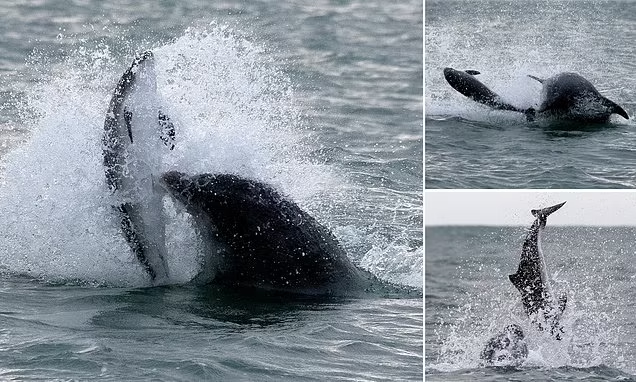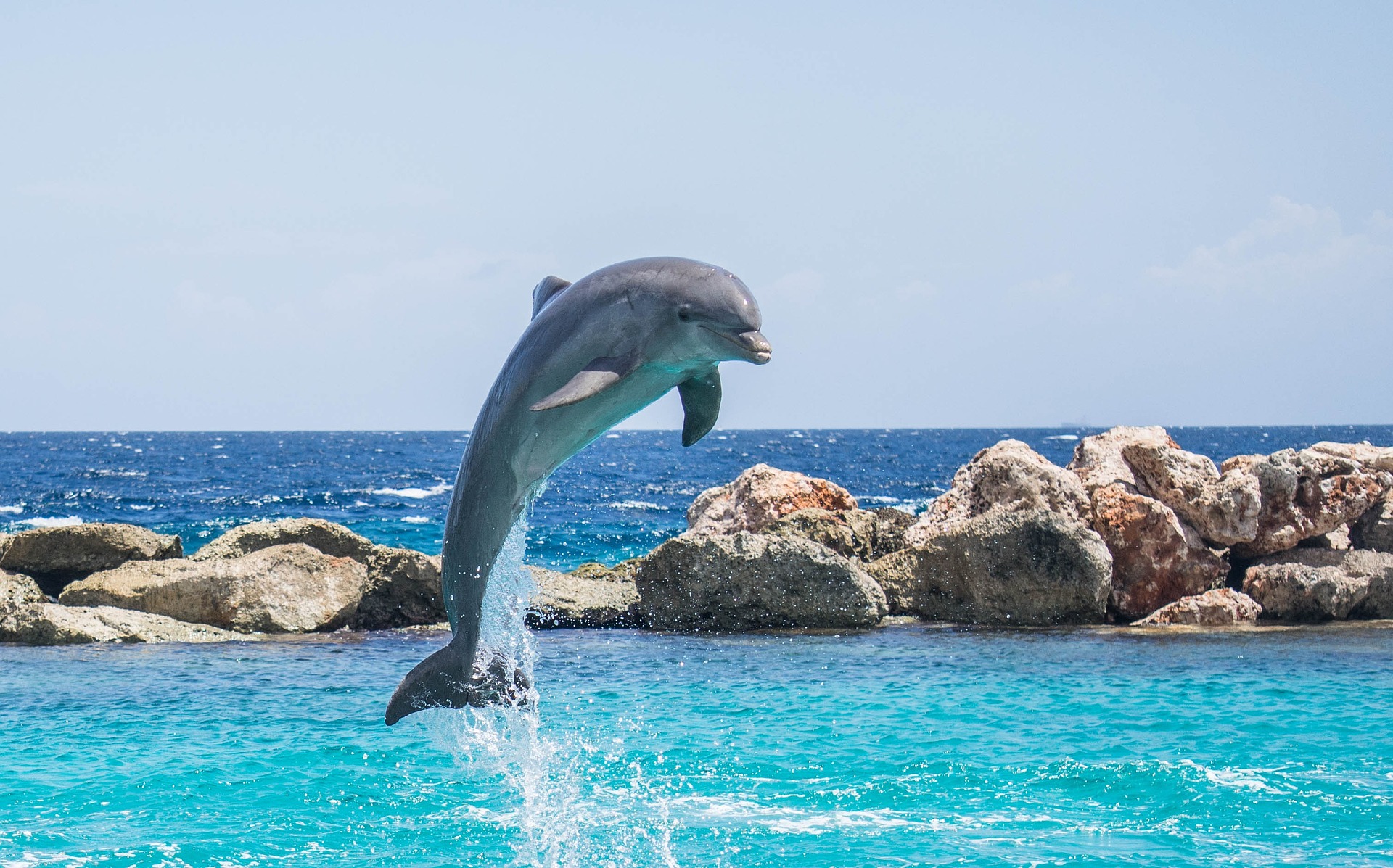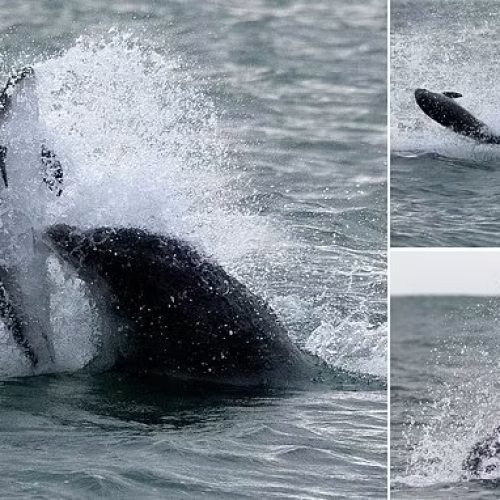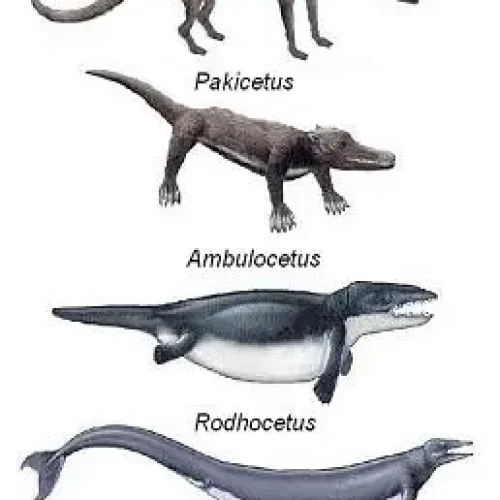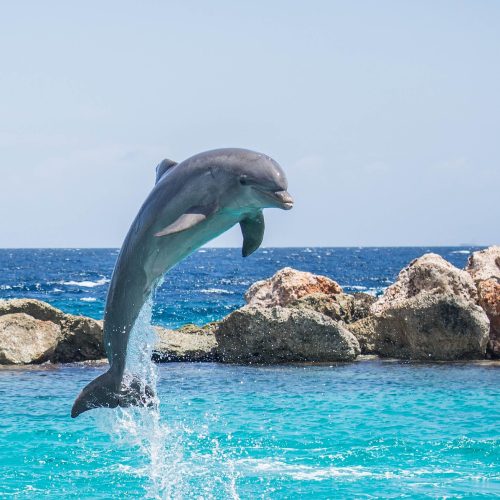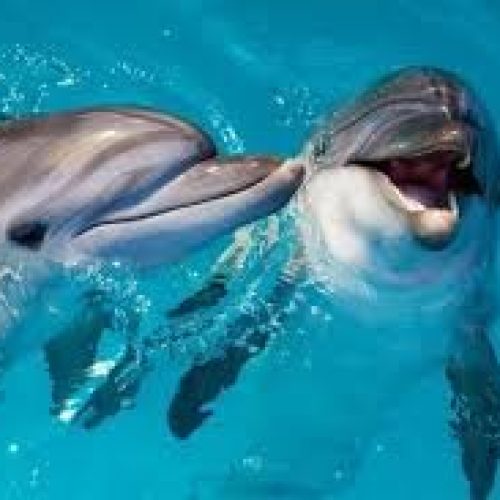In this article
THE UNLIKELY ANCESTORS: TRACING DOLPHIN ORIGINS
Imagine a world where dolphins roamed on land. Sounds far-fetched? Yet, this was once reality.
The journey of these charismatic marine mammals from terrestrial creatures to ocean dwellers is a testament to nature’s ingenuity and adaptability.
Meet pakicetus: the wolf-like ancestor of dolphins
Picture a wolf-sized creature with hooves and a long snout, prowling the edges of ancient rivers. This is Pakicetus, the earliest known ancestor of modern dolphins, living about 50 million years ago.
Fossil evidence discovered in Pakistan reveals a creature perfectly adapted for a semi-aquatic lifestyle.
Pakicetus sported a unique ear structure, similar to modern cetaceans, allowing it to hear underwater.
This adaptation gave it a significant advantage when hunting fish, marking the first step towards a fully aquatic existence.
Its skull shape suggests a diet transitioning from land-based prey to aquatic organisms, a crucial shift in the evolutionary path towards dolphin-hood.
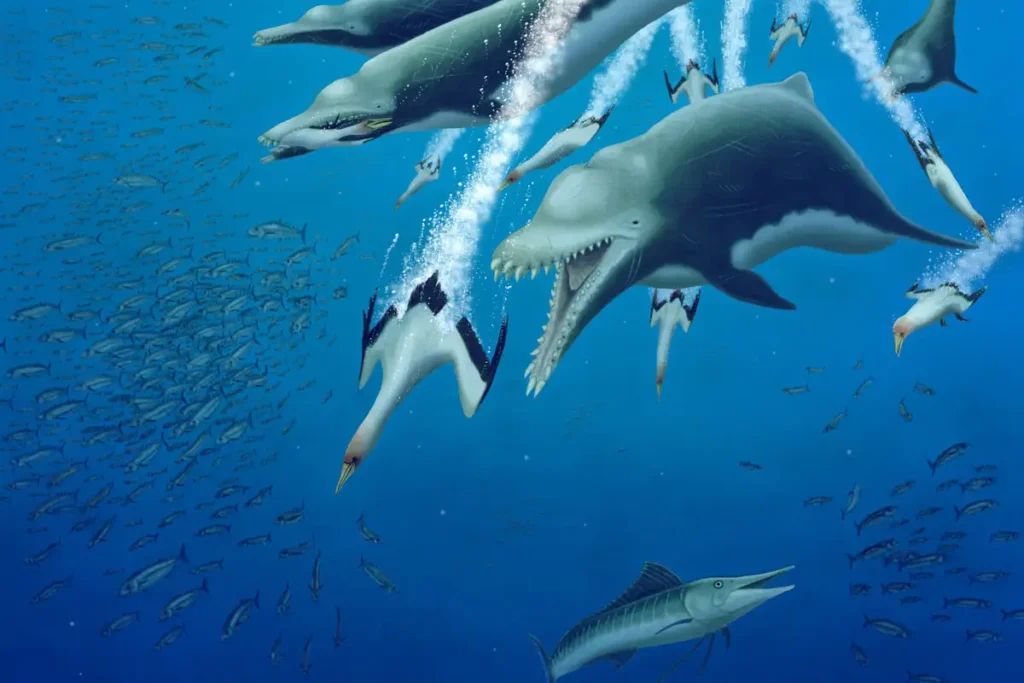
Ambulocetus: the walking whale that bridged land and sea
Fast forward a few million years, and we encounter Ambulocetus, aptly nicknamed the “walking whale”. This creature, about the size of a large sea lion, represents a critical transitional form between land and sea.
Ambulocetus possessed powerful legs capable of supporting its weight on land, but its feet were webbed, perfect for swimming.
Its tail, while not yet developed into a fluked shape, was strong and likely aided in propulsion through water.
Imagine a creature equally at home chasing prey on mudflats and diving for fish in coastal waters – a true evolutionary marvel.
“From the wolf-like Pakicetus to the almost fully aquatic Rodhocetus, each stage represents a remarkable feat of natural engineering.”
Rodhocetus: when hooves became flippers
The next stage in this aquatic adventure brings us to Rodhocetus, a creature that lived around 47 million years ago.
Here, we see a body form much closer to modern cetaceans, with key adaptations for a predominantly marine lifestyle.
Rodhocetus’s limbs had shortened considerably compared to its predecessors. The hind limbs, while still present, were significantly reduced and likely used more for mating and steering in water rather than locomotion on land.
The forelimbs were evolving into flipper-like appendages, losing the distinct digits of its ancestors.
Perhaps most striking was the position of Rodhocetus’s nostrils. They had begun to migrate towards the top of the skull, the first step towards the blowhole we see in modern dolphins.
This adaptation allowed for more efficient breathing while swimming, a crucial development for a life spent primarily in water.
The tale of dolphin evolution is a reminder of nature’s incredible ability to adapt and thrive in new environments.
From the wolf-like Pakicetus to the almost fully aquatic Rodhocetus, each stage represents a remarkable feat of natural engineering.
EVOLUTIONARY MILESTONES: ADAPTING TO AQUATIC LIFE
The journey of dolphins from land-dwelling mammals to marine marvels spans an awe-inspiring 50 million years.
This remarkable transformation showcases nature’s ingenuity and the power of evolutionary adaptation.
Echolocation: nature’s sonar system
Perhaps the most fascinating adaptation in dolphin evolution is echolocation.
This sophisticated biological sonar allows dolphins to navigate murky waters, locate prey, and communicate with astonishing precision.
Fossil evidence suggests that early ancestors of dolphins, like Pakicetus, lacked this ability.
However, as they transitioned to aquatic environments, changes in skull structure and inner ear anatomy gradually emerged.
By studying the basilosaurid whales from about 34 million years ago, scientists have found early indicators of echolocation capabilities.
Today, dolphins can produce up to 1,000 clicks per second, with some species detecting objects as small as 2.5 cm from 100 meters away.
This natural sonar far surpasses human-made systems in efficiency and accuracy.
From fur to fins: streamlining for speed
The transformation from a furry, four-legged mammal to a streamlined marine athlete is nothing short of extraordinary.
Early whale ancestors like Indohyus sported dense bones and thick fur, adaptations more suited to riverside living.
As these creatures spent more time in water, evolution favoured a more hydrodynamic shape:
• Limbs evolved into flippers and flukes
• Body hair reduced dramatically
• Skin became smooth and elastic
• Blubber developed for insulation and buoyancy
Modern dolphins, like the bottlenose (Tursiops truncatus), can reach speeds of 37 km/h in short bursts. Their streamlined bodies reduce drag by up to 90% compared to other similarly sized marine animals.
Breathing easy: from nostrils to blowholes
The shift from terrestrial to aquatic breathing presented a significant challenge. Early whale ancestors breathed through nostrils located at the front of their snouts, much like modern land mammals.
Over millions of years, these nostrils gradually migrated to the top of the head, evolving into the distinctive blowhole we see in dolphins today.
This adaptation allows for efficient breathing at the water’s surface without the need to tilt the entire head.
The blowhole is an engineering marvel, sealed by strong muscles when submerged. When a dolphin surfaces, it can expel water and inhale fresh air in a fraction of a second.
Some species, like the Cuvier’s beaked whale, can hold their breath for over two hours, diving to depths of 2,992 meters.
This evolutionary journey from land to sea showcases nature’s incredible ability to adapt and thrive in new environments.
From the development of echolocation to the streamlining of bodies and the repositioning of breathing apparatus, dolphins stand as a testament to the power of natural selection over vast spans of time.
THE MODERN DOLPHIN: 50 MILLION YEARS IN THE MAKING
Diversity in the dolphin family: from river dolphins to orcas
The dolphin family, scientifically known as Delphinidae, boasts an impressive array of species.
From the petite Maui’s dolphin, measuring just 1.7 meters in length, to the imposing orca reaching up to 9 meters, these cetaceans have adapted to various aquatic habitats.
River dolphins, like the Amazon river dolphin (Inia geoffrensis), showcase the family’s versatility.
These freshwater specialists have evolved long, slender beaks to navigate murky waters and catch prey in tight spaces. Their unique adaptations highlight the dolphin family’s ability to thrive in diverse environments.
On the other end of the spectrum, orcas (Orcinus orca) dominate the oceans as apex predators.
Their intelligence and social structures rival those of humans, demonstrating the extraordinary cognitive evolution within the dolphin lineage.
Remaining vestiges of terrestrial life in modern dolphins
Despite their aquatic mastery, dolphins retain several features that betray their terrestrial ancestry:
• Vestigial hip bones: These small, seemingly purposeless bones are remnants of the hind limbs their ancestors used to walk on land.
• Voluntary breathing: Unlike fish, dolphins must consciously surface to breathe, a trait inherited from their air-breathing terrestrial ancestors.
• Vertical tail movement: Dolphins swim by moving their tails up and down, mirroring the spinal flexion of running land mammals, rather than the side-to-side motion of fish.
These vestiges serve as a testament to the dolphin’s evolutionary journey, bridging the gap between their land-dwelling past and aquatic present.
Ongoing evolution: how dolphins continue to adapt today
Evolution is an ongoing process, and dolphins continue to adapt to changing environments and challenges:
1. Echolocation refinement: Studies suggest that some dolphin species are fine-tuning their echolocation abilities to navigate increasingly noisy ocean environments caused by human activities.
2. Dietary adaptations: Coastal dolphin populations are showing signs of adapting to new food sources as traditional prey becomes scarcer due to overfishing and climate change.
3. Behavioral changes: Researchers have observed dolphins in some areas altering their hunting techniques and social behaviors in response to changing ecosystem dynamics.
For instance, bottlenose dolphins (Tursiops truncatus) in Shark Bay, Australia, have been observed using sea sponges as tools to protect their rostrums while foraging on the seafloor.
This behavior, known as “sponging,” is believed to be a culturally transmitted adaptation that allows these dolphins to access food sources in otherwise challenging environments.

